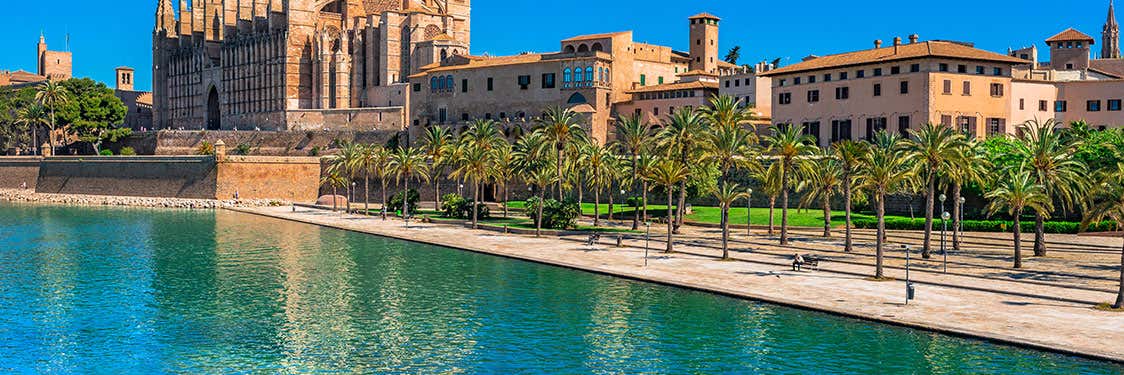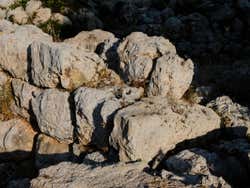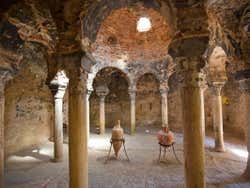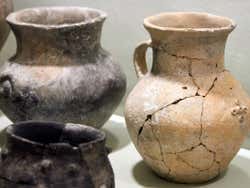
History of Mallorca
Thanks to its strategic location in the Mediterranean, the island of Mallorca has historically been a key point through which a multitude of peoples and cultures have passed, from the Phoenicians and Greeks to the Islamic world.
Mallorca in Prehistory
Historians agree that the first time people arrived on the island was around the year 7000 B.C., during the age of the Talaiotic, a period that has been preserved to this day in ancient archaeological sites, such as Capcorb Vell.
The Land of Greeks, Phoenicians and Romans
For centuries, Mallorca was home to three important historical communities: the Greeks, Phoenicians and Romans. There are still ancient ships that have been conserved from these times, which were found under the sea along Mallorca's coastline.
During this time, the Balearic Islands had their first stable population and began growing, both politically and economically.
It wasn't until the year 123 B.C. that the city became a truly important place on the continent. Quinto Cecilio Metelo, who would later receive the surname Balearicus, conquered the islands and decided to grant them economic importance to establish a type of commercial war with the Phoenicians.
The conquest of the islands wasn't easy for the Roman soldiers, who had to come face to face with the inhabitants who were skilled in the art of war and resisted the invasion for over 2 long years. Once the island and all of the Balearic archipelago had been won, the Honderos of Mallorca became part of the troops supporting the Roman Empire, even lending help to Julius Caesar in the conquest of the territories in Gallia.
Thanks to the long period of Roman rule, there are still many buildings that have been conserved and are considered architectural gems, such as the Roman city of Pollentia (Alcúdia), where you can see some of the many remains on the island.
Byzantine Conquest & Muslim Empire
The invasion of Mallorca by the Byzantines was one of the darkest periods of the island's history, bringing with it a period of political and social instability that impeded the area's economic growth.
Finally, in 903, the islands were annexed to the Caliphate of Cordoba after several Muslim attacks on the territory and after a period of war of attrition that lasted for more than 2 centuries.
At this point, Mallorca was under the power of the dynasty of the Umayyad Caliphate. It began a period of great political and administrative stability. One of the main advances during this period would be the flourishing of a strong attachment to the arts that would turn the capital, Madina Mayurqa, now Palma, into an important cultural centre for the entire Empire.
Crown of Aragon & the Spanish War of Succession
From the year 1343 and after the reconquering of the territories occupied by the Muslims, Mallorca was under the control of the Crown of Aragon and later the Crown of Castile, after the marriage of the Catholic Monarchs.
This time was a period of setback for the economy and interests of the area because the peninsula only had eyes for the New World and the conquest of America, so these new territories would take second place.
During the War of Succession to the Spanish throne, the Balearic Islands declared their allegiance to Archduke Charles of Austria. In 1715, the Castilians occupied Mallorca, and the defeat became effective. After approving the Nueva Planta decree for the Balearic Islands and putting an end to Catalan administration and provincial law, the Castilian language would be introduced, and the Catalan language would be banned throughout the territory.
Spanish Civil War
After the Spanish coup of July 1936, the territory of Mallorca was occupied by the rebels, who soon after also took over the island of Ibiza. Meanwhile, the smaller neighboring island of Menorca remained loyal to the Republic.
For the rest of the conflict, Mallorca became an Italian naval air base, and the presence of military troops increased considerably until the island became one of the epicentres of air and sea traffic in the Mediterranean. After Franco's victory in April 1939, the Italian troops began a withdrawal that lasted more than two years.
From Autonomous Statue to Current Day
After the death of the dictator Francisco Franco, the country began a democratic transition, thanks to which the region established a Statute of Autonomy to defend its historical identity. This document would bring with it the dual official status of Catalan, the islands' own language, and Castilian Spanish, the language most commonly spoken in peninsular Spain.
This ushered in a period in which important democratic advances were made and in which social and civil movements began to play a much more important role.
It was at this time that the island's natural and tourist value began to be taken into account, something that fortunately is still preserved today.


